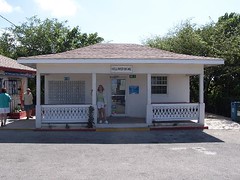The Cayman Islands are found in the western Caribbean Sea. This British Overseas Territory is made up of three islands: Grand Cayman, Little Cayman, and Cayman Brac.

Discovery of the Cayman Islands is attributed to Christopher Columbus, who sighted them in May of 1503, on his fourth voyage to the New World. He originally gave the islands the name “Las Tortugas” as the coasts were dotted with huge sea turtles. When Sir Francis Drake arrived on the islands in 1586, he promptly changed their name to “Cayman”- a derivative of the local word for “alligator”.
As with many of the Caribbean Islands, the Caymans went largely undeveloped and uninhabited until the middle of the 17th century. A few hardy stragglers had made the islands their home, including a few shipwrecked sailors, various pirate crews, refugees from the Spanish Inquisition, and a number of deserters from Oliver Cromwell’s army stationed in nearby Jamaica.
The Cayman Islands officially came under British rule in 1760, under the Treaty of Madrid. While the British officially controlled the island, all attempts at settlement were frustrated for the next few decades. The three islands were popular pirate haunts, and piracy largely prevented any permanent settlement. It wasn’t until sometime in the 1730s that the British moved in and established an official English-speaking settlement.
As the settlement grew, so too did the Cayman Islanders’ demand for slaves. Before long, more than half of the islands’ population was made up of African slaves. When the first census of Grand Cayman was taken in 1802, records showed that out of the 933 residents, 545 of them were slaves owned by Caymanian families. This is reflected in the today’s population, as the majority of modern Caymanians are of English and African descent, with a large degree of interracial mixing.

From 1670 onward, the Cayman Islands were technically considered a dependency of Jamaica; however, the islands were largely self-governed. In 1831, local residents established a legislative assembly consisting of 10 elected representatives along with eight local magistrates appointed by the Governor of Jamaica. Overall, Jamaica interfered little with the governance of the Caymans.
The Cayman Islands continued to be loosely governed by the Colony of Jamaica until Jamaica was granted its independence in 1962. At this time, the Cayman Islands were designated as a separate Crown Colony.
Today, the Cayman Islands are considered a non-self-governing British Overseas Territory. A governor is appointed by the Queen, and represents the British monarchy on the Islands. The Islands are officially defended by the Crown, though the British government interferes little in the running of the country.
The population of the Cayman Islands sits at around 56,000. The population is largely of mixed heritage, with nearly 60% being of African-Caucasian ethnicities.













